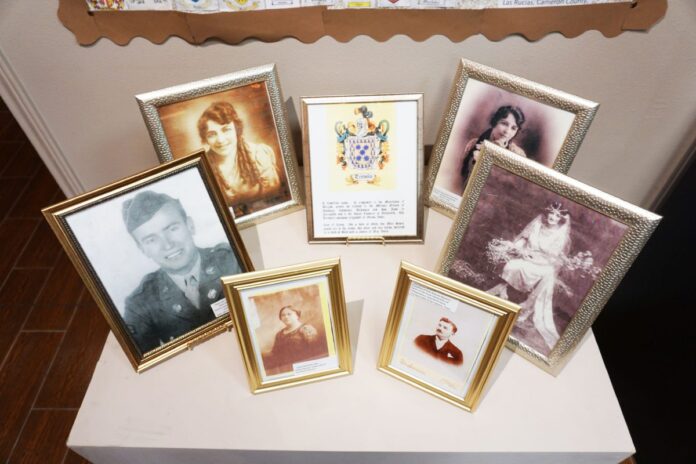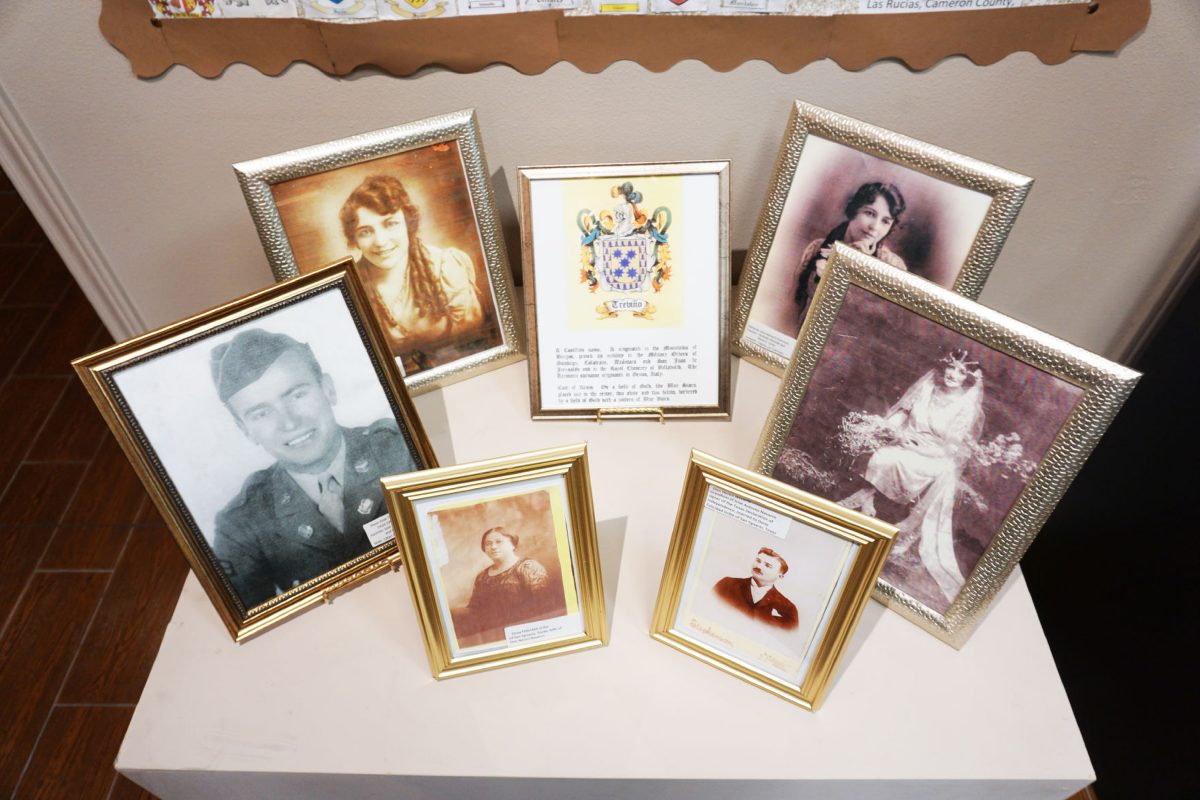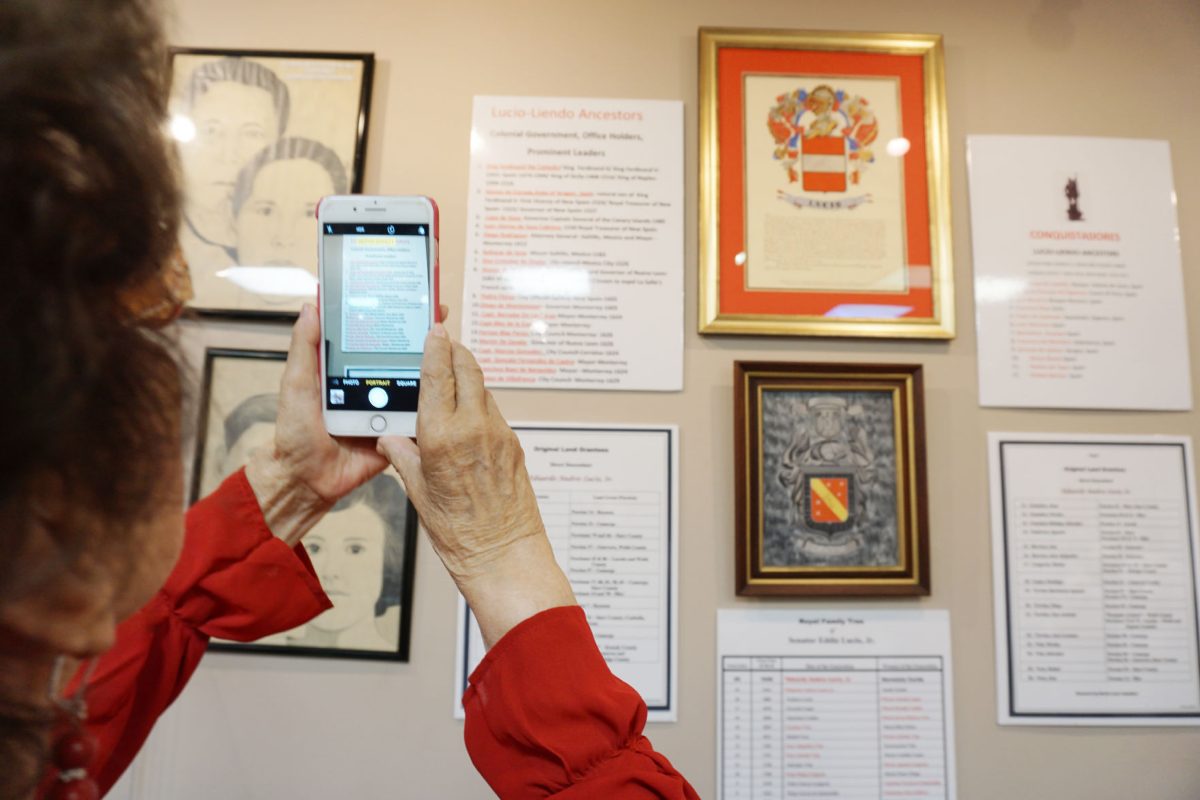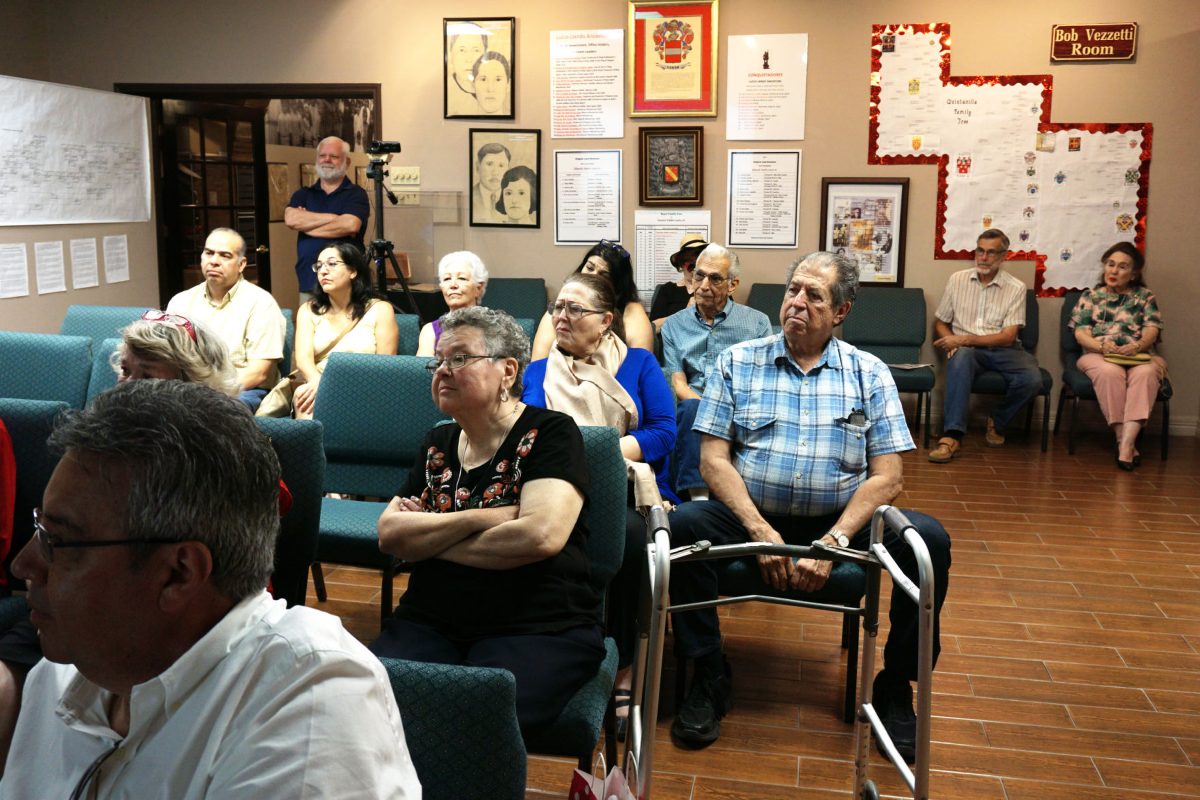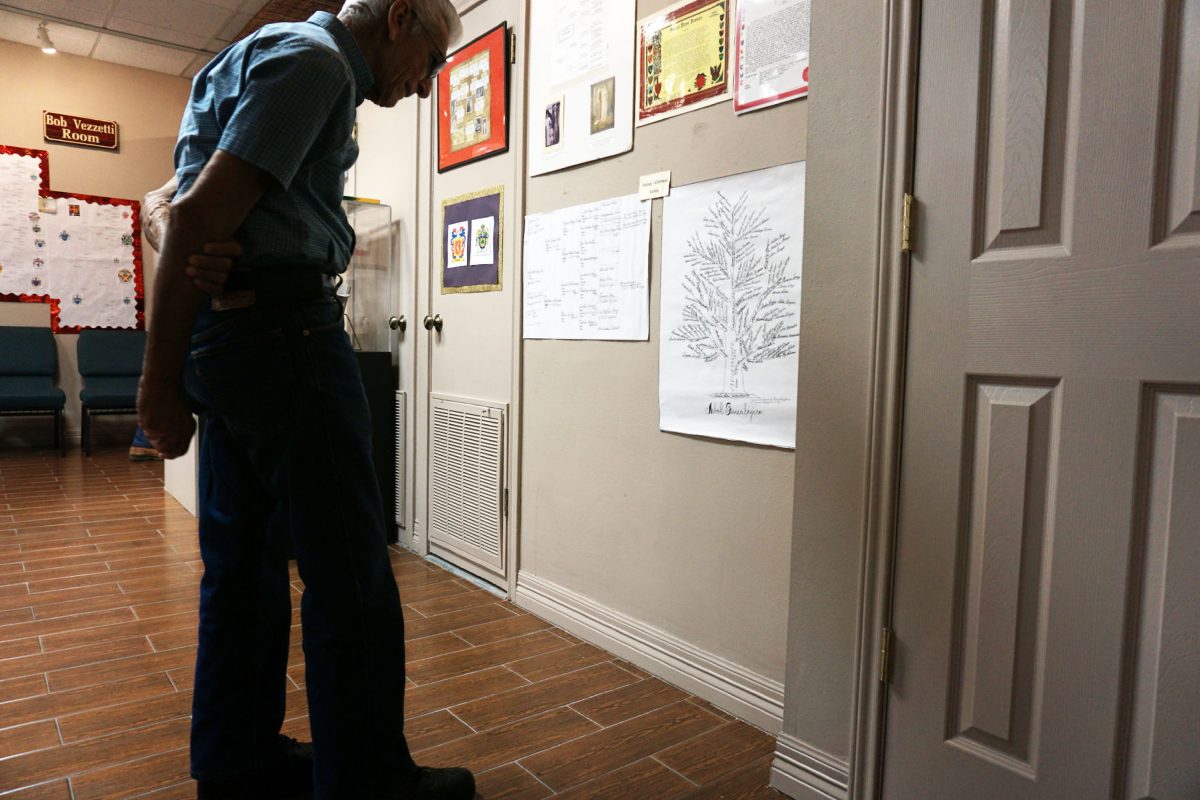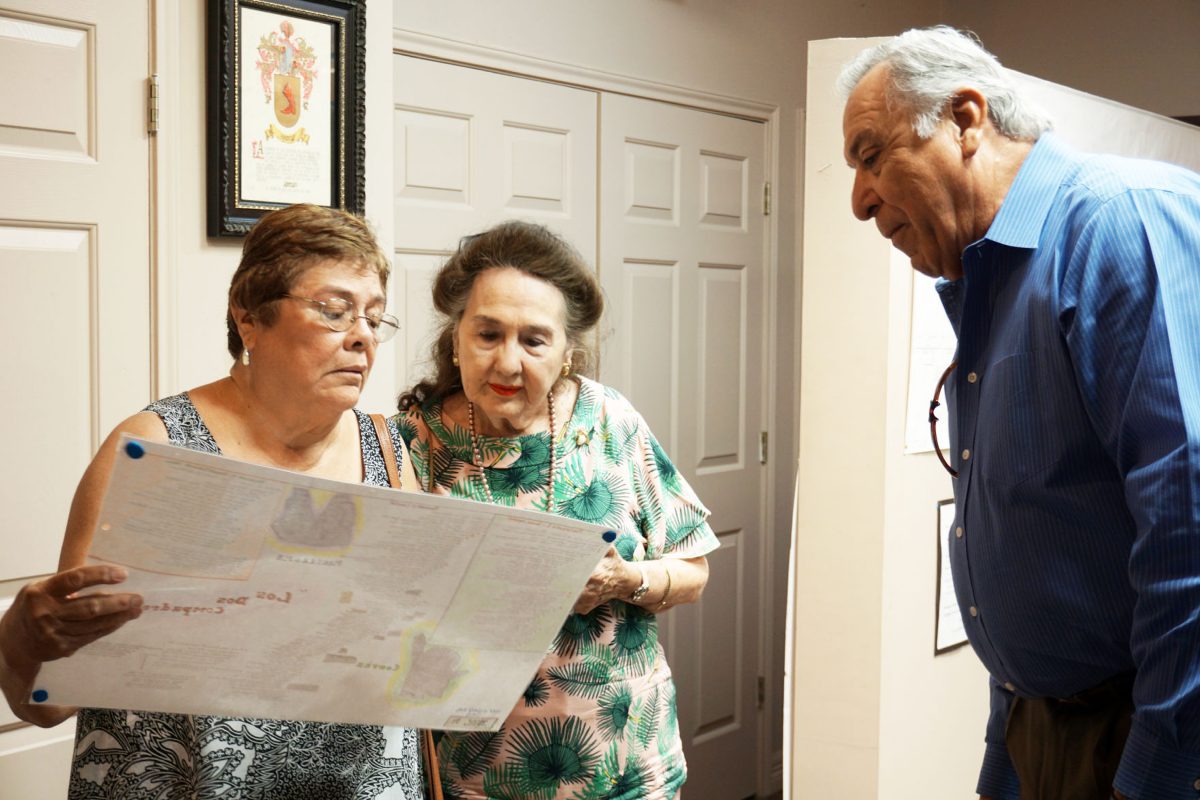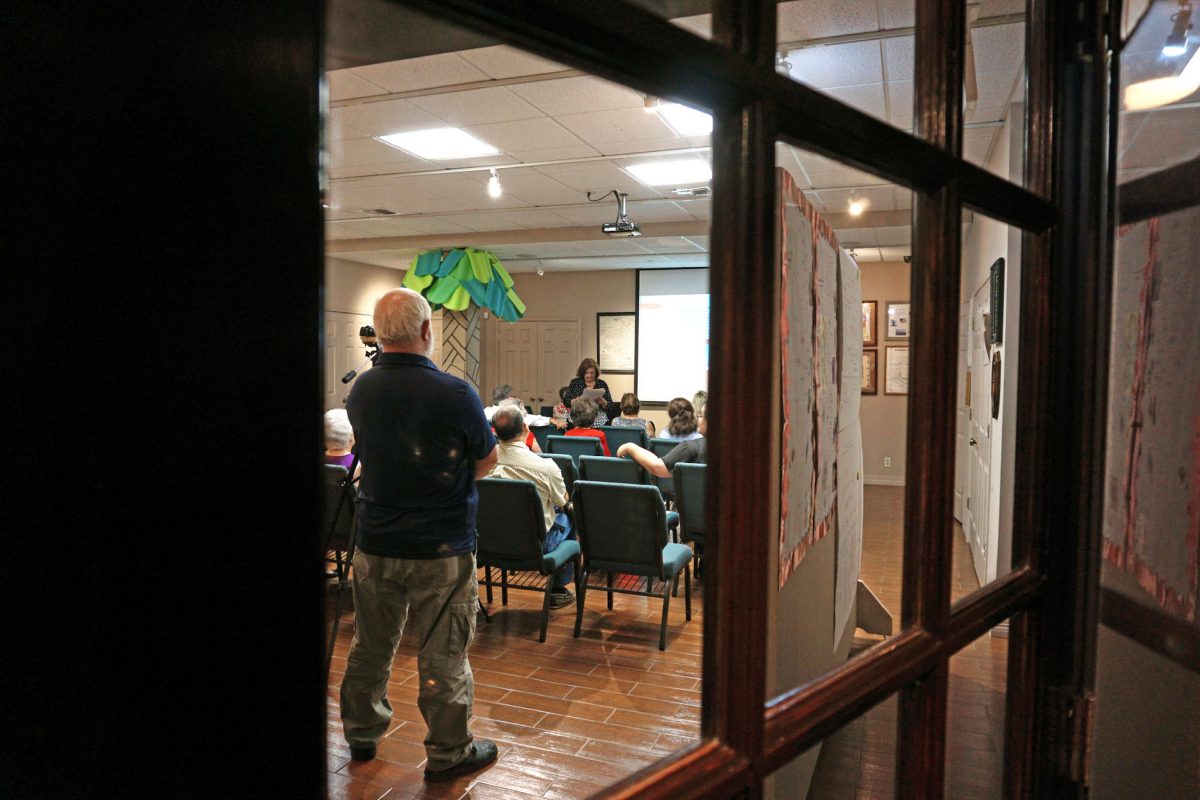BROWNSVILLE — It’s been said that if a person digs deep enough into local family histories, they will find that everyone is related.
Members of the Rio Grande Valley Hispanic Genealogical Society have the documents to prove it. They joined the Brownsville Historical Association on Saturday to celebrate the opening reception of their exhibit “Roots and Me: Family Trees” at the Brownsville Heritage Museum. The family trees will be on display through Sept. 29.
“We’re here to share the extent of what we have learned and what we continue to learn,” President Marry Torres said.
Torres told the audience that genealogical research is one of the fastest-growing hobbies in the United States, with many enthusiasts driven by curiosity, a desire for familial medical information, gaining entry to a historical society or the thrill of working on the “puzzle of a lifetime.”
Ofelia Olsson, secretary of the genealogical society, said that her interest in history grew as she learned more about her family. Her great-grandfather came to the United States during the 1850s, she said. He surely didn’t have enough money to afford his own wagon at that time, but he later prospered enough as a farmer to leave each of his children half an acre of land.
“You form all these pictures in your mind of your family,” Olsson said. “He made such a success of himself.”
Torres said the best way to approach researching family history is to start with yourself and work backward. Question family legends about links to famous figures, verify information sources and try searching with various spellings of your last name, she added. Torres also cautioned against companies that sell family histories because they tend to be generic and may not be related to your lineage at all.
“It’s a passion, an addiction,” she said.
Delfina Esparza Perez said she became interested in researching her genealogy after a family reunion in 2000. With the help of the genealogy society members, she said she traced her family all the way back to Aztec emperor Montezuma and Gregorio Esparza, who died at the Alamo.
“What I most enjoy is the fellowship, first of all my relatives and second of all the friends I have found,” Esparza Perez said.

